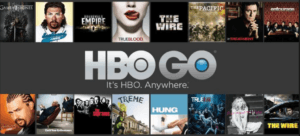HBO: Content Now Or On The Go

HBO has launched HBO Go and HBO Now to stay relevant as TV distribution channels shift to digital and viewing habits change.
As the television landscape has shifted away from traditional cable and toward digital distribution channels, HBO has managed to stay relevant by shifting its business model. HBO made two notable shifts: 1) launching HBO Go in 2010 to better compete with streaming services and 2) launching HBO Now in 2015 to accept subscribers that do not have pay television.
Digital Transformation of the Media Industry
Over the past few years, the traditional pay TV distributors have been plagued by cord-cutting, where subscribers who have paid for cable in the past cancel their cable subscription. In 2015, 82% of TV households in the US subscribed to pay TV service compared to 87% in 2011[i]. Many of these subscribers are replacing traditional cable and satellite pay TV service with digital streaming services, such as Netflix, Hulu, Amazon Prime, and HBO Now. The top reason for cord cutting is that pay TV is too expensive[ii].
The average US cable bill was $103 per month in 2015, a 4% increase from 2014 and 39% increase from 2011.[iii] Replacing cable TV with Netflix ($9.99 per month for Standard tier)[iv], Amazon Prime ($99 per year or $8.25 per month)[v], Hulu ($7.99 per month with commercials)[vi], and HBO Now ($14.99 per month)[vii] would only cost $41.22 per month, a 60% decrease in monthly fees. Together, these four services provide access to a large amount of premium content.
HBO Premium Cable Network
Traditionally, HBO was a premium cable network that subscribers could add onto a basic cable subscription for a monthly fee of typically $15 per month. HBO captured value by retaining a portion of this revenue and sharing the rest with the cable or satellite distributor. HBO (Home Box Office) originally created value for subscribers by airing popular, new-release movies that had recently been in movie theaters. In the 1990s and 2000s, HBO began the strategy of creating exclusive, original content to differentiate from other premium movie networks. This model has been adopted by Netflix, Amazon Prime, and other digital distributors as they invest in original content to attract and retain subscribers.
HBO Go: Making HBO Available Anytime, Anywhere
Netflix launched its streaming service in 2007. As television viewing shifted to digital channels, HBO launched HBO Go in 2010 as a free add-on for existing HBO subscribers, allowing subscribers to watch HBO content when and where they wanted on screens other than a television.
With the entry of new distribution channels, the number of companies competing to create and distribute content has increased significantly. This has led to a plethora of high-quality, high-budget television content. HBO continues to create value for subscribers in all of its distribution channels by investing in more original programming to compete directly with Netflix and Amazon Prime[viii], and in my opinion, has some of the best new content currently available, including Game of Thrones and Westworld.
HBO Now: Embracing the Cord Cutters
HBO took this strategy further by opening up their service to cord cutter with the 2015 launch of HBO Now. This allows cord cutters to access HBO content that they previously couldn’t without a pay TV subscription. HBO was one of the first traditional cable networks to create a direct-to-consumer offering that circumvented the traditional pay TV distributors. The HBO CEO confirmed that HBO Now is an incremental revenue stream that is not cannibalizing revenue from cable distribution, with less than 1% of subscribers switching from a cable HBO subscription to HBO Now[ix], especially since it is priced equivalent to the pay TV add-on.
HBO captures value by charging $14.99 per month for an HBO Now subscription. Since it is a direct-to-consumer offering, HBO gets all of this revenue and does not need to share with pay TV distributors like with traditional distributors. As of March 2016 (the last reported subscriber data), HBO Now had close to 1 million subscribers[x]. This equates to $180 million in revenue annually.
Conclusion
HBO was not the first company to offer consumers a digital streaming offering or the first traditional media player to launch a direct-to-consumer offering; but, as a follower, HBO has adapted and added to its business model to continue to create and capture value in the evolving media landscape. However, the company needs to continue to invest in original content to stay relevant to subscribers, especially as Netflix continues to increase its proportion of original content[xi].
[i] http://www.leichtmanresearch.com/press/092316release.html
[ii] https://www.emarketer.com/Article/Why-Internet-Users-Cutting-Cord/1013893
[iii] http://fortune.com/2016/09/23/average-cable-tv-bill/
[iv] https://www.netflix.com/getstarted?locale=en-IN
[v] https://www.amazon.com/gp/help/customer/display.html?nodeId=200966690
[vi] https://help.hulu.com/articles/52427902
[vii] https://order.hbonow.com/
[viii] http://www.independent.co.uk/arts-entertainment/tv/news/hbo-ramp-up-original-content-production-by-50-to-compete-with-netflix-order-vinyl-season-2-a6888646.html
[ix] http://money.cnn.com/2015/08/05/media/hbo-now-internet-data/
[x] https://www.bloomberg.com/news/articles/2016-03-08/time-warner-says-hbo-now-service-nearing-1-million-subscribers
[xi] http://variety.com/2016/digital/news/netflix-50-percent-content-original-programming-cfo-1201865902/






Great post Natalie. Totally agree that HBO has been doing a “winning” job in the media world while so many others are suffering. HBO Go’s success really showed HBO the power of going over the top (OTT) and reaching consumers directly. As a consumer advocate, I love that they decided to offer HBO Now directly to consumers without a cable subscription. This definitely allowed them to reach younger audiences that didn’t want to sign up for cable and hence could not get HBO. However, at the Time Warner corporate level, I am more concerned about this decision since I worry that it might lead to cannibalistic cord cutting eventually. And more cord cutting means less subscriber fees for their other cable networks which are important for them too (CNN, TNT, TBS, etc). A way around this would be for them to go OTT for all their cable channels as well – though I’m not sure if the OTT subscribers’ revenue gain would make up for losses on the cable subscriber fee side. Just like other cable networks, they benefit from bundling and once the bundles are broken its going to be hard to pick up the pieces! Do you think Time Warner should go OTT with all their cable channels?
Loved your thoughts on HBO’s digital transition—I’m really impressed by how they’ve managed to adapt in ways that other “old television” firms have not, even if their strategy still has unanswered questions (like Nupur’s). Thinking back to our Samsung discussion, it was striking how fragmented the digital television consumption and content landscape has become. With that in mind, it seems that firms like Netflix and Amazon are doing a great job of leveraging fine-grained viewership data both for content development and user recommendations, enabling them to find content niches to target and to improve their user experiences. I’m curious to know if you think this approach is a threat to HBO’s content model or HBO Now’s viability. Do they need to build out data expertise in order to compete over the long term, or will their existing content development capabilities and “one size fits all” user experience remain competitive?
I find this post and the chain of questions fascinating! Thank you Natalie for sharing about HBO Now – I actually had not heard of this service and might have to look into subscribing as I have wanted to start watching Game of Thrones for quite some time but never had the access to it (as I am also not a current cable subscriber).
I find Nupur’s comment regarding OTT an interesting concept. I wonder how this would work. If as a consumer, I am able to choose which cable channels I would like to subscribe to, it would mean that I could lower my cable bill and ensure that the only thing coming through is content I want to see. However if all subscribers are doing this, I wonder if there are consequences that we are not considering – the price to upkeep the networks, the satellites, any remaining cabling that delivers content not on the internet? I recognize that the digitization of everything is upon us, but are there any negative consequences we are not foreseeing when we allow consumers to pick and choose their networks?
Great post – thank you! The HBO NOW vs MVPD stand-off was an interesting one – negotiations between them can be fierce and get ugly. I was just going to add another interesting point about HBO that I came across having to do with the digital age. Piracy is a huge issue for these new types of accounts. Many different people share logins, and Game of Thrones is one of the most pirated TV shows of all time overseas. However, HBO doesn’t seem that concerned about this, and they’ve even said that piracy is actually like a form of marketing for their service. They think that exposure to their content will make a non-payer (like a young student) more likely to pay for the service when they are able (aka can afford to). I found that to be a pretty interesting philosophy!
http://www.forbes.com/sites/insertcoin/2014/04/15/game-of-thrones-sets-piracy-world-record-but-does-hbo-care/#3efc145a7198